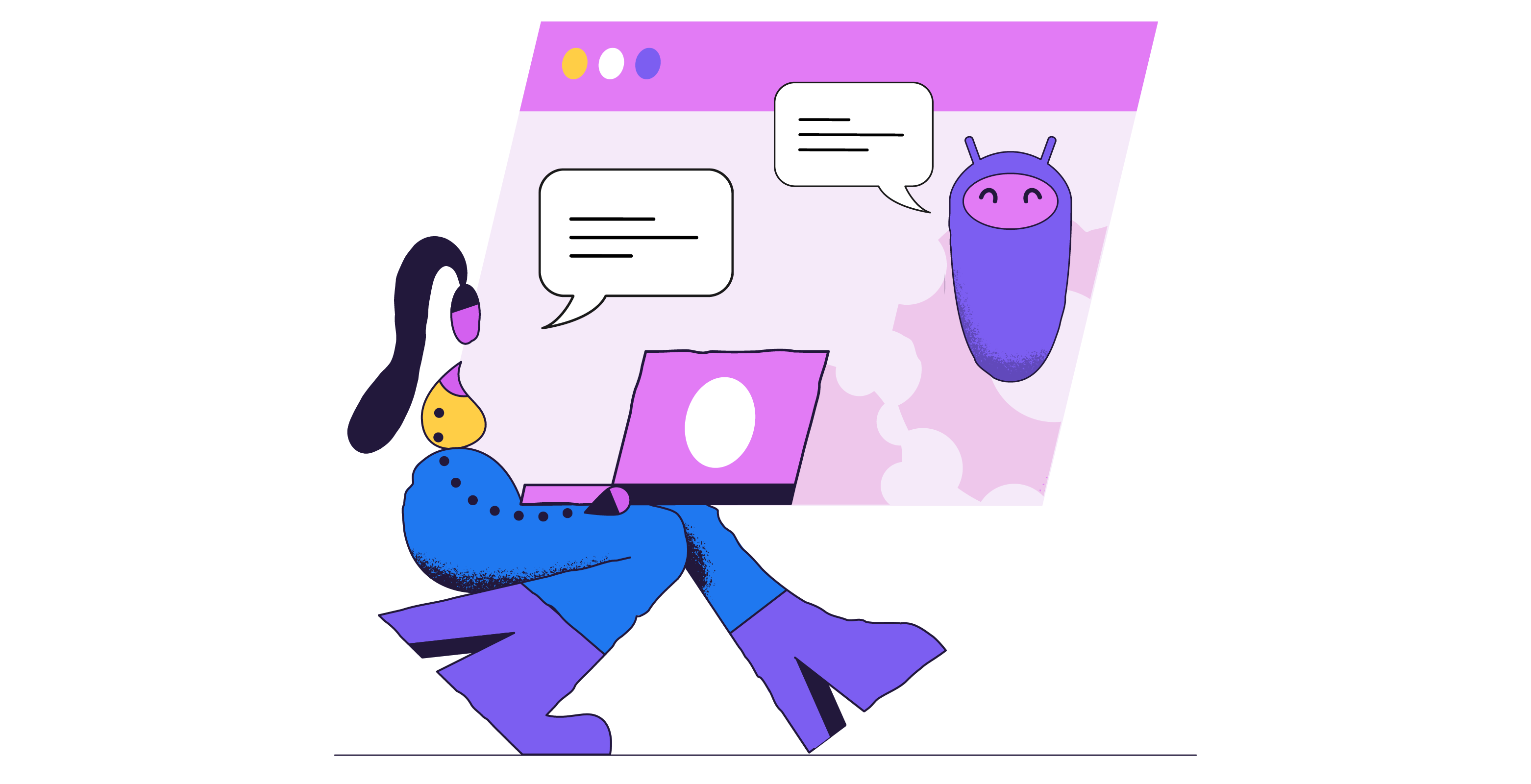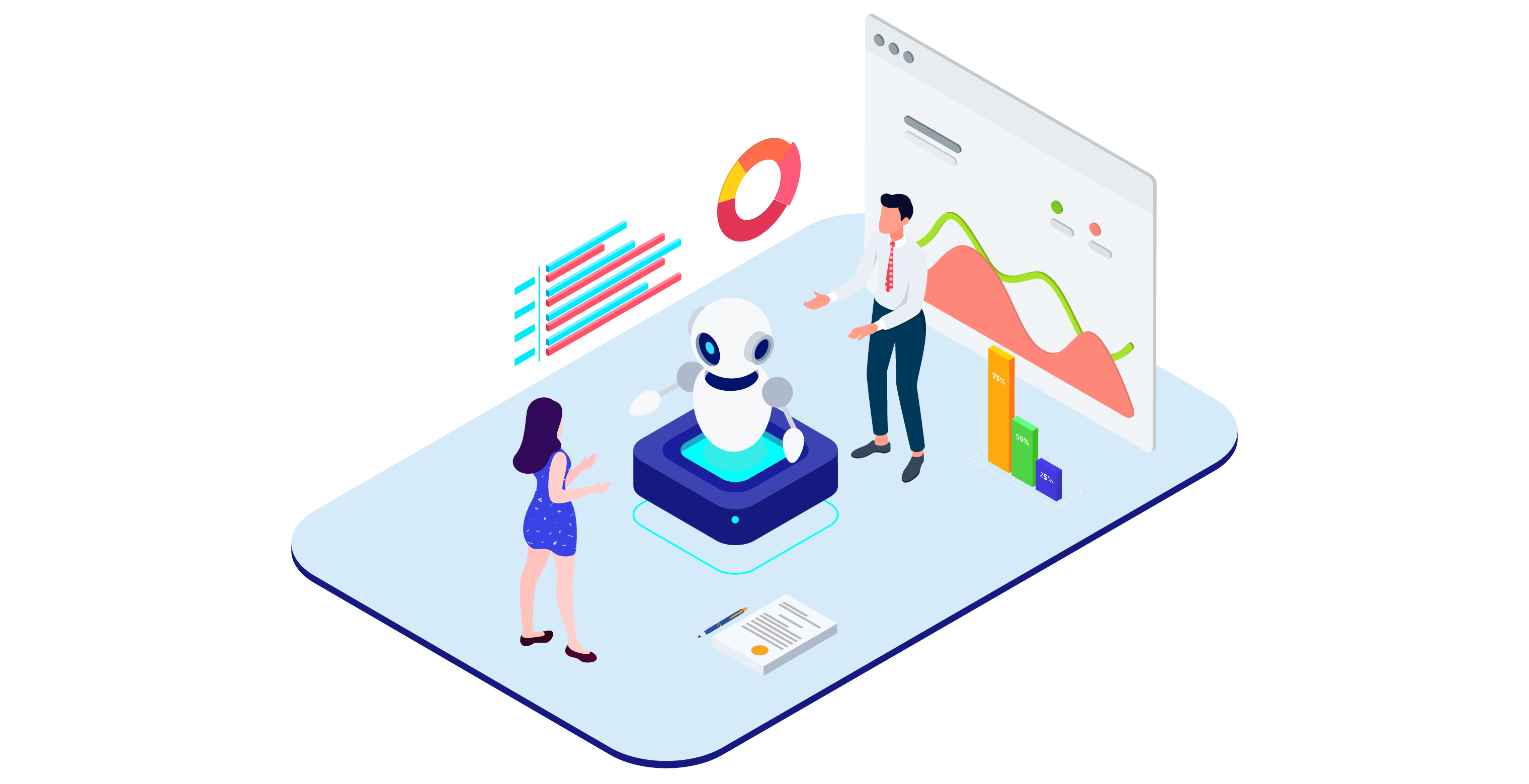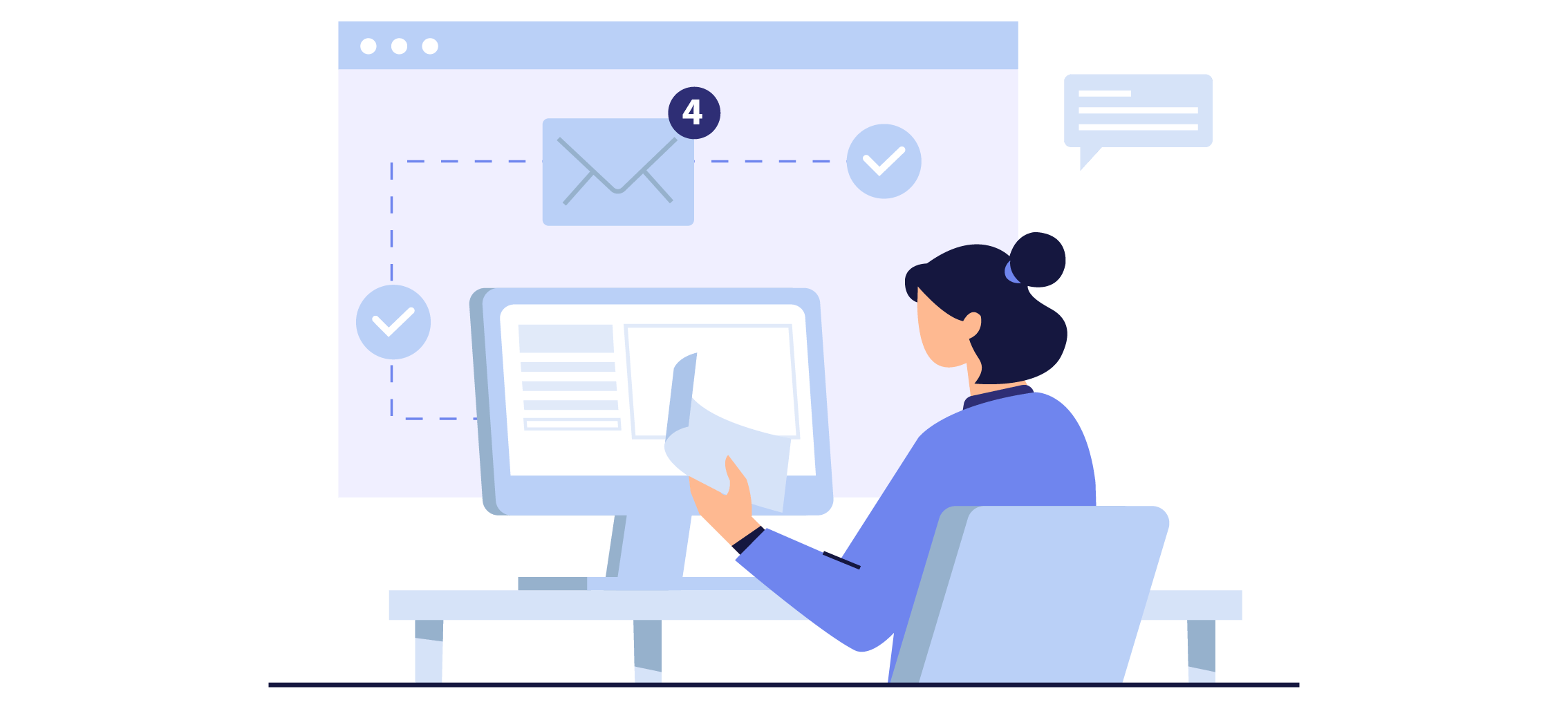AI, AI, AI … is there a single business discussion that doesn’t at least mention it these days?
There’s a good reason for it, though, and that’s because AI has revolutionized the modern-day business world in every way imaginable.
With superhuman abilities to swiftly process tons of data and make informed decisions in seconds, AI can take any business to the next level. In fact, it’s gotten to the point where it’s become increasingly challenging for businesses not leveraging AI to stay competitive.
The good news is that, as AI has become so mainstream, most business tools are now upgraded with various AI features for all teams to enjoy. And while such tools are essential in creating AI workflows in the company, that’s just the tip of the iceberg.
Before diving into how to build an AI-driven business, let’s take a look at the main benefits and limitations of AI in business.
Benefits of an AI-driven business
The benefits that AI brings to a business cannot be understated – it’s a real game changer, when implemented correctly. Besides filling all the smaller gaps in business operations by providing stellar and creative content, visuals, ideas, and support, AI’s real power lies within the following 5 points.
AI increases revenue
Starting off with the most enticing advantage, AI helps businesses create more opportunities and then makes it easier to act on them through powerful automations. According to McKinsey, 65% of sales and marketing teams reported revenue growth from AI in 2022.
AI improves quality of service
No human is perfect, but AI is as close to perfection as we can get in the business world. 9 in 10 organizations consider AI as a major competitive advantage. AI removes any potential human error, analyzes customer behavior, and creates the ultimate tailored buyer experiences. The result – impeccable service.
AI saves time and money
Besides driving sales, AI also has the power to diminish operational costs by roughly 40%. By delegating routine and complex tasks with full trust, workers can shift their focus on the more demanding tasks, saving time and money for the company.
AI improves workflow
Virtually all business workflows can be improved with AI – automating repetitive and creative processes, making logical and coherent decisions, and a little something called machine learning, in other words, AI’s self-ability to learn and develop. Studies show it has the potential to boost employee productivity by 40%. Now try converting that into revenue.
AI improves data security
In a completely digitalized world, data security should be on every firm’s top priority list. With its powerful algorithms, AI significantly strengthens proprietary data security and prevents any harmful breaches. In one study, around 60% of companies admitted they wouldn’t have caught an occurred breach if it wasn’t for AI.

Limitations of an AI-driven business
On the other hand, there are some pitfalls we need to consider when talking about the role of AI in businesses. Even though the sheer value of AI outweighs the potential drawbacks, knowing those limitations in advance could help companies anticipate and address them promptly.
AI can’t replace human behavior
AI is great at executing tasks but still lacks the human touch, which is much needed in today’s business environment. AI may slightly dehumanize sales, marketing, and customer support engagement, potentially pushing away modern customers expecting a genuinely personalized service. Perhaps that’s the reason over half of customers would still rather speak with a human agent than an AI chatbot.
AI can produce plagiarized, biased, and inaccurate information
In some cases, information produced by AI could be plagiarized, biased, or inaccurate, all depending on how it was programmed and where it extracts data from. When left unchecked, this could easily damage one’s brand reputation. Surprisingly, Forbes found that 75% of customers are worried about misinformation from AI.
AI has costly barriers to entry for new businesses
While building an AI-driven team becomes cost-effective in the long run, it does have a costly barrier of entrance for smaller teams. Besides software purchases, businesses will be faced with numerous other costs, including training and maintenance.
AI has security loopholes due to… AI
The paradox of using AI for IT security is that it opens loopholes for ‘bad’ AI to hack businesses, raising concerns about customer and company data privacy. It’s a minor example of the dystopian ‘AI can be turned evil’ logic, and 71% of IT respondents believe AI cyberattacks will start ramping up very soon.
AI can hinder productivity
AI boosts productivity – no doubt about that, but only if paired with motivated humans. In some instances, the luxury of having AI could potentially make teams lazy as they rely on it to do the heavy lifting.

AI use cases in business
AI can be implemented in absolutely every business department. At this point, there’s probably an AI tool for every business task imaginable.
While many of them are industry-specific with specialized functionality, here are some of the most common AI use cases in today’s business environment, along with recommendations of the top tools for each one.
Sales
Sales teams can put AI to use for multiple processes. By analyzing past and existing customers, sales AI helps teams target and score leads more likely to make a purchase.
With conversational AI and studying customer behavior – teams can personalize and scale their sales engagement for greater conversions.
On top of that, AI allows businesses to continuously tweak and improve their sales strategies with the help of accurate sales forecasts.
Sales AI tools:
When it comes to marketing, businesses can deploy AI to create the most tailored email campaigns for each potential customer, depending on the data points picked up by AI.
Marketing
Similarly, marketing teams can use AI to create effective targeted content and ads by analyzing the most engaging keywords and CTA’s, and then producing unique text in seconds.
This is a great booster for companies’ SEO efforts which are crucial in snatching those top Google search positions.
Marketing AI tools:
- Mailchimp (email marketing campaigns);
- Insider (predict buyer behavior to make tailored experiences).
Customer support
Modern-day business is fast-paced – take too long to respond to customers, and they’ve already crossed you out from their list of options.
Potential buyers expect instantaneous support when questions arise throughout their purchase journey, but customer success teams often struggle to deal with large volumes of queries at a time.
While chatbots have been around for some time, AI has supercharged CS chatbots with the ability to logically interpret unique queries and provide personalized support rather than templated responses.
Customer support AI tools:
HR / Recruiting
Needless to say, HR teams deal with tons of data when hiring new team members, from posting 100s of ads to going through 100s of resumes and having 100s of interviews.
Recruitment AI platforms simplify the hiring process by optimizing job posts, screening & scoring candidate resumes, and proactively searching for the best-fit candidates on the job market.
HR AI tools:
- TestGorilla (talent assessment & scoring);
- Workable (candidate sourcing & nurturing).
Operations
Besides integrating AI into all the customer-facing teams already covered, businesses can also use it to assist operations teams in ensuring the smooth running of day-to-day processes.
Giving AI a birds-eye view of all departmental and cross-departmental operations will help organizations analyze financials & generate forecasts, create data-centered KPIs, and synergize all internal & external data in real-time to ensure the most optimal workflow and team productivity.
In some cases, operations teams and senior-level executives may also use AI’s powerful algorithms to analyze mass datasets and entire markets and help with strategic decision-making.
Operations AI tools:
- Forecast (project and resource management)
- Tableau (data integration & analytics)
- DataDog (daat monitoring, analysis, and security toolstack)
- Causal (revenue modeling & financial forecasting)
- Centus (translation and localization management)

Tips for creating an AI-driven team
Building an AI-centered business is not rocket science, but it’s also so far from easy. While it may seem as simple as purchasing some AI software to automate a few processes, it requires specialized knowledge, time, and dedication.
AI, efficiency, and innovation have to radiate from within the company’s core, and that ultimately means changing the existing training and processes to ensure the most optimal use of AI features to achieve set goals.
Here are the 5 main tips for building an AI-driven company:
- Strategize
Understand your exact business goals, which processes have to be optimized or implemented, and take the time to plan the best way AI can benefit your exact team.
What are your main obstacles? What extra data will you need? These are all questions you want to ask yourself before embarking on this journey.
- Get your team ready
Building an AI business entails having workers who know exactly how to use it – they may need training, new team members, or a mix of both.
In any case, it’s the responsibility of the management to ensure new AI tools, strategies, and processes are clearly understood by everyone.
- Refine your toolstack
Not every single tool in your stack has to be AI-powered, but those in charge of the most important processes absolutely have to.
Keep in mind that you should prioritize AI software that blissfully integrates with your existing tool stack for an efficient cross-departmental flow of data and workflows.
- Prioritize no code/low-code
Unless you’re a large enterprise with an in-house IT team, you may want to prioritize AI software that is easy to set up with no coding/low coding needed.
While you could hire outside help to get everything situated, AI software needs continuous and swift maintenance, so best stick with simplified tools that are easy to set up and use on a daily basis.
- Start slow
Gradually increasing the role of AI in a business will help the learning curve and make it much easier to eventually glue everything together.
Rather than making room in every workflow for AI, start with one, perfect it, then move on to the next.
Ready to build your AI-driven business?
Now that we’ve briefly covered every aspect of integrating AI into your business operations, time to put theory into practice with a well-thought strategy.
Reforming your business with AI tools and workflows is inevitable, so why not do it now while you’d still be ahead of the competition?
AI in business is just getting started, so who knows what the future has in store for us. But the best way to get prepared is to find a synergetic way to combine the power of AI with your hard-working talents.
The ball is in your court.
Oleg Bilozor is the CEO and Founder at Reply.io, an AI-first sales engagement platform. Oleg has a background in software development and strong entrepreneurial skills. Having started Reply.io back in 2014, he managed to grow the company into a mature business with with millions in revenue. He is passionate about AI and always looking for ways to innovate routine processes and tasks.

